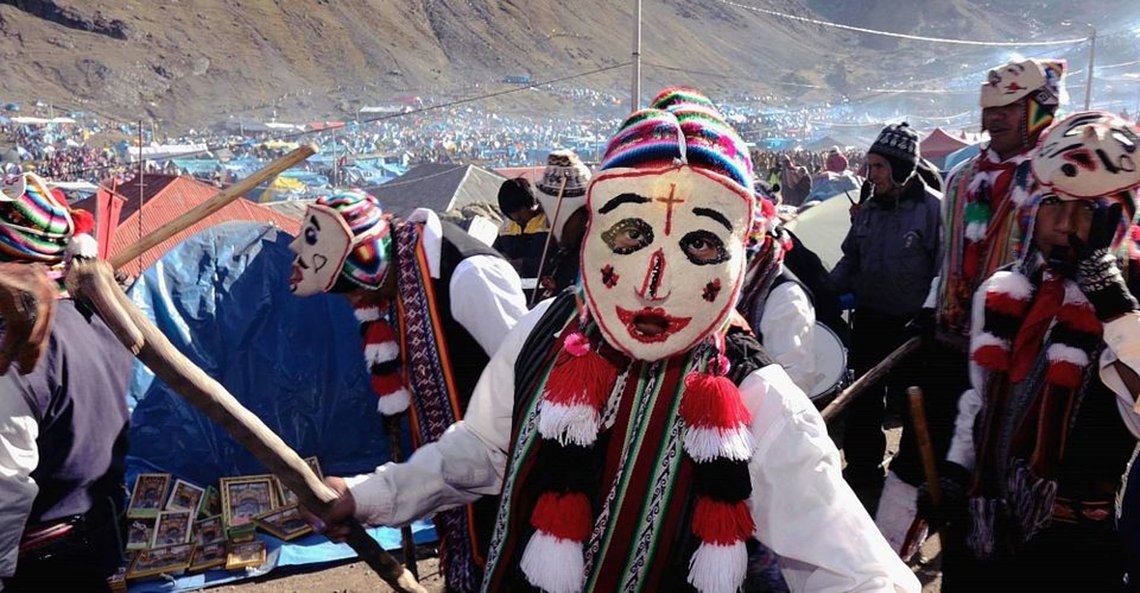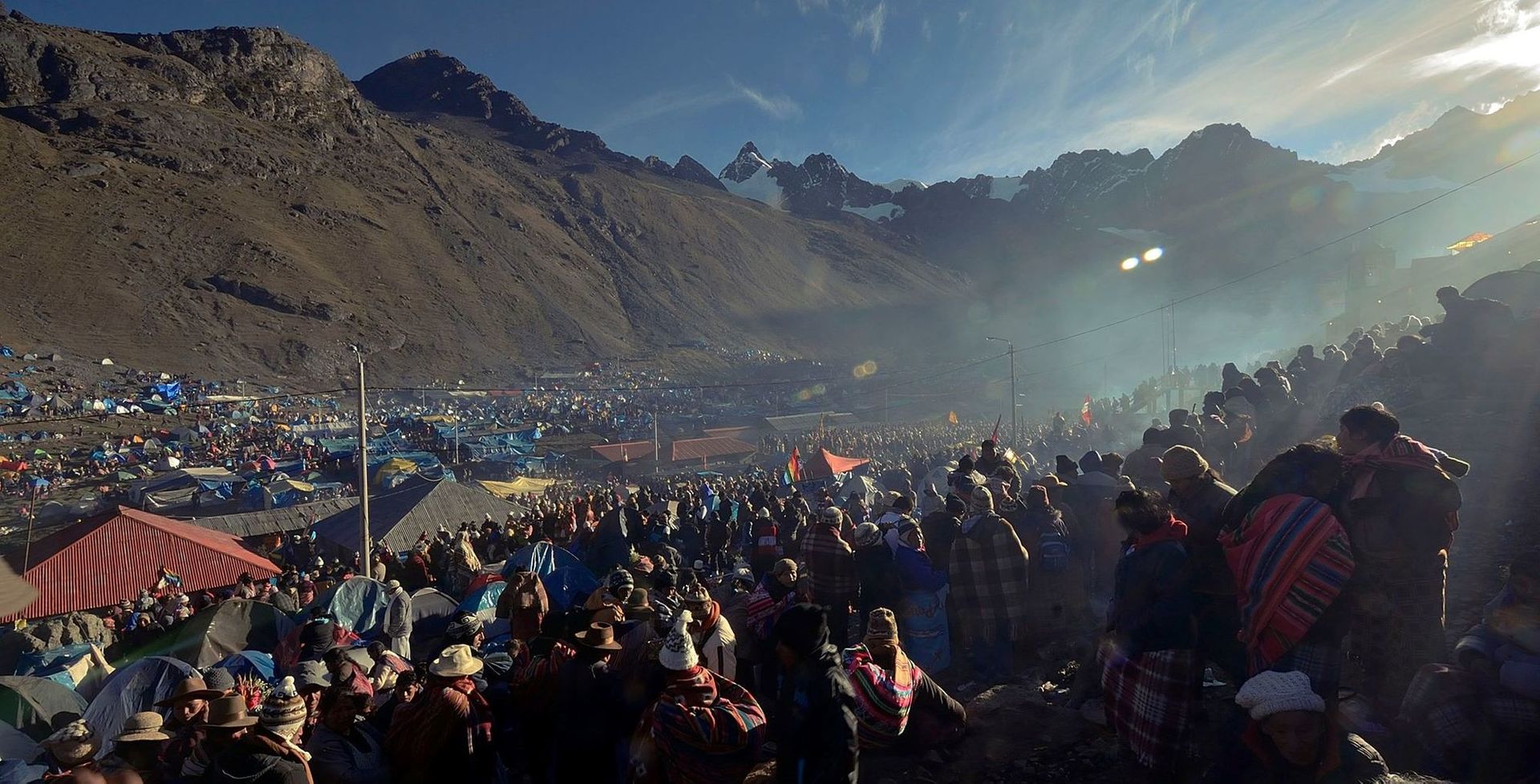The Celebration of Señor de Qoyllur Riti in Peru
In Quechua, “Qoyllur Riti” means “Shining Snow”, and the festival is called “Taytacha Qoyllur Riti” in that same language

Posted on Wed 21 Feb 2018
A week before Corpus Christi and again in mid-September
In Quechua, “Qoyllur Riti” means “Shining Snow”, and the festival is called “Taytacha Qoyllur Riti” in that same language. As Quechua doesn’t have a standardized alphabet and spellings, the spelling of this festival has various different versions.
This ancient festival draws tens of thousands of people from high Andean communities from all over western South America. They congregate on a sanctuary situated at 4,600m in the remote Sinakara Valley near Mt. Ausangate and the village of Mawayani. This festival and the corresponding sanctuary has its roots in legend. The best-known version says that a mestizo (indigenous-Hispanic) boy aided an alpaca shepherd in taking care of his flock. To thank him, the shepherd’s father decided to make fine new clothes for him. The Bishop of Cusco was intrigued by the boy’s generosity and wanted to meet to him, so he asked the priests of the church in the nearby town of Ocongate to investigate. Yet the boy was now nowhere to be found. His shepherd friend died of sadness, and in the place where this occurred an image of a crucified Christ appeared in a rock. The Sanctuary of the Señor de Qoyllur Riti is constructed over this rock.
People come from all over South America, but the traditional Ten Nations or Brotherhoods which always attend this event are from the Peruvian provinces of Paucartambo, Quispicanchis and Tahuantinsuyo. To celebrate, they send a delegation of dancers and ukukus to represent themselves. These ukukus are costumed dancers dressed as mythical bear men. On one of the festival days, they climb up to the Sinakara Glacier at 4am to harvest the ice to take back to their community, where it will be used to water the crops and perform ceremonies. The ukukus are also responsible for maintaining discipline during the festivities; participants who break the rules (no alcohol, no fighting, etc.) are whipped about the ankles. To disguise their identities, ukukus usually talk in high-pitched voices.
Participants venerate Our Lady of Fatima, asking for her blessings in business and life. The festival ends in Cusco with the celebration of Corpus Christi, when the streets fill with colorful celebrations and the statues of 15 saints and virgins being brought to the Cusco Cathedral to meet with Christ.
